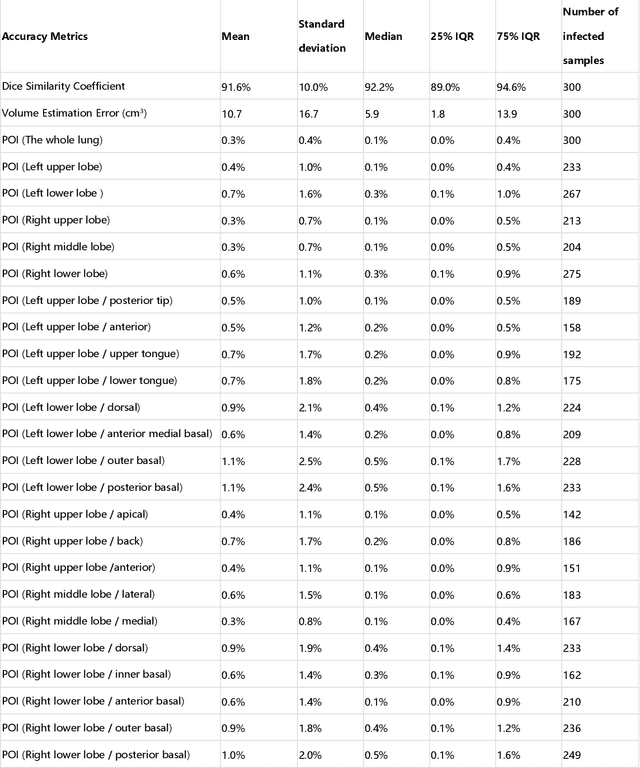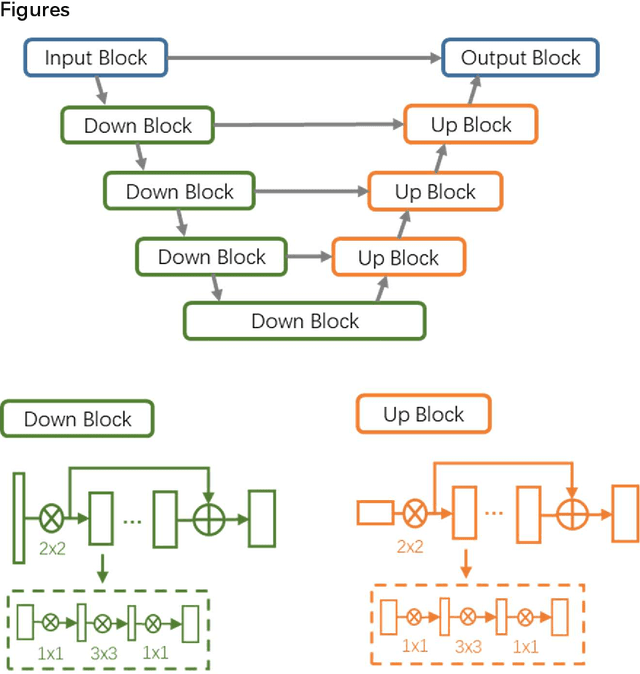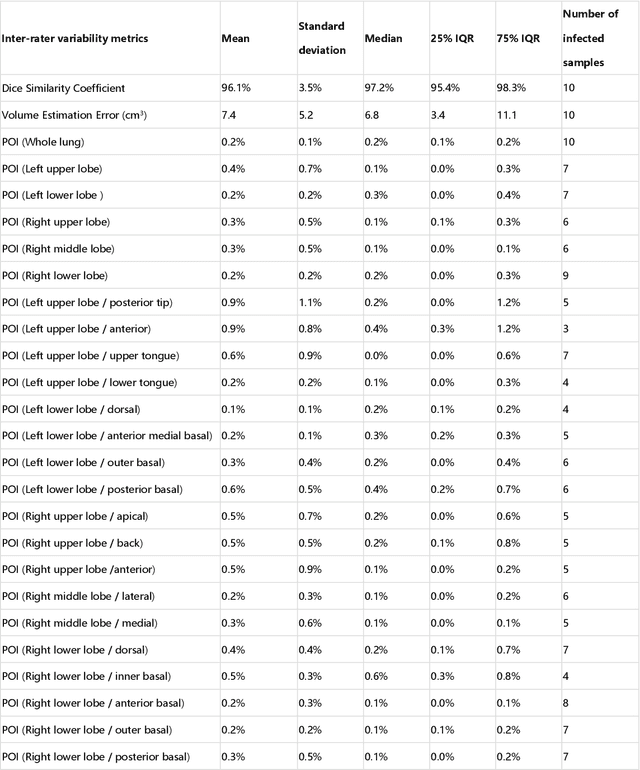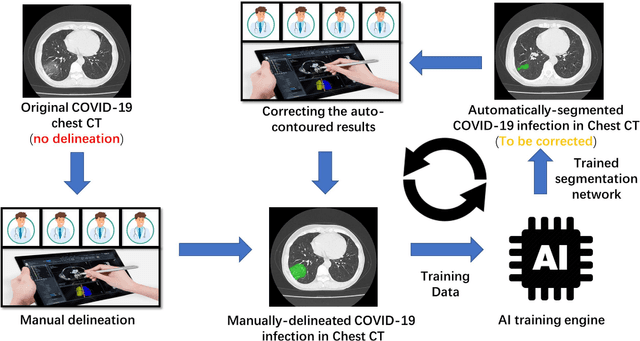Yuxin Shi
MERIT: Multi-view Evidential learning for Reliable and Interpretable liver fibrosis sTaging
May 05, 2024Abstract:Accurate staging of liver fibrosis from magnetic resonance imaging (MRI) is crucial in clinical practice. While conventional methods often focus on a specific sub-region, multi-view learning captures more information by analyzing multiple patches simultaneously. However, previous multi-view approaches could not typically calculate uncertainty by nature, and they generally integrate features from different views in a black-box fashion, hence compromising reliability as well as interpretability of the resulting models. In this work, we propose a new multi-view method based on evidential learning, referred to as MERIT, which tackles the two challenges in a unified framework. MERIT enables uncertainty quantification of the predictions to enhance reliability, and employs a logic-based combination rule to improve interpretability. Specifically, MERIT models the prediction from each sub-view as an opinion with quantified uncertainty under the guidance of the subjective logic theory. Furthermore, a distribution-aware base rate is introduced to enhance performance, particularly in scenarios involving class distribution shifts. Finally, MERIT adopts a feature-specific combination rule to explicitly fuse multi-view predictions, thereby enhancing interpretability. Results have showcased the effectiveness of the proposed MERIT, highlighting the reliability and offering both ad-hoc and post-hoc interpretability. They also illustrate that MERIT can elucidate the significance of each view in the decision-making process for liver fibrosis staging.
Fairness-Aware Job Scheduling for Multi-Job Federated Learning
Jan 08, 2024Abstract:Federated learning (FL) enables multiple data owners (a.k.a. FL clients) to collaboratively train machine learning models without disclosing sensitive private data. Existing FL research mostly focuses on the monopoly scenario in which a single FL server selects a subset of FL clients to update their local models in each round of training. In practice, there can be multiple FL servers simultaneously trying to select clients from the same pool. In this paper, we propose a first-of-its-kind Fairness-aware Federated Job Scheduling (FairFedJS) approach to bridge this gap. Based on Lyapunov optimization, it ensures fair allocation of high-demand FL client datasets to FL jobs in need of them, by jointly considering the current demand and the job payment bids, in order to prevent prolonged waiting. Extensive experiments comparing FairFedJS against four state-of-the-art approaches on two datasets demonstrate its significant advantages. It outperforms the best baseline by 31.9% and 1.0% on average in terms of scheduling fairness and convergence time, respectively, while achieving comparable test accuracy.
Fairness-Aware Client Selection for Federated Learning
Jul 20, 2023Abstract:Federated learning (FL) has enabled multiple data owners (a.k.a. FL clients) to train machine learning models collaboratively without revealing private data. Since the FL server can only engage a limited number of clients in each training round, FL client selection has become an important research problem. Existing approaches generally focus on either enhancing FL model performance or enhancing the fair treatment of FL clients. The problem of balancing performance and fairness considerations when selecting FL clients remains open. To address this problem, we propose the Fairness-aware Federated Client Selection (FairFedCS) approach. Based on Lyapunov optimization, it dynamically adjusts FL clients' selection probabilities by jointly considering their reputations, times of participation in FL tasks and contributions to the resulting model performance. By not using threshold-based reputation filtering, it provides FL clients with opportunities to redeem their reputations after a perceived poor performance, thereby further enhancing fair client treatment. Extensive experiments based on real-world multimedia datasets show that FairFedCS achieves 19.6% higher fairness and 0.73% higher test accuracy on average than the best-performing state-of-the-art approach.
A Reliable and Interpretable Framework of Multi-view Learning for Liver Fibrosis Staging
Jun 21, 2023Abstract:Staging of liver fibrosis is important in the diagnosis and treatment planning of patients suffering from liver diseases. Current deep learning-based methods using abdominal magnetic resonance imaging (MRI) usually take a sub-region of the liver as an input, which nevertheless could miss critical information. To explore richer representations, we formulate this task as a multi-view learning problem and employ multiple sub-regions of the liver. Previously, features or predictions are usually combined in an implicit manner, and uncertainty-aware methods have been proposed. However, these methods could be challenged to capture cross-view representations, which can be important in the accurate prediction of staging. Therefore, we propose a reliable multi-view learning method with interpretable combination rules, which can model global representations to improve the accuracy of predictions. Specifically, the proposed method estimates uncertainties based on subjective logic to improve reliability, and an explicit combination rule is applied based on Dempster-Shafer's evidence theory with good power of interpretability. Moreover, a data-efficient transformer is introduced to capture representations in the global view. Results evaluated on enhanced MRI data show that our method delivers superior performance over existing multi-view learning methods.
A Survey of Fairness-Aware Federated Learning
Nov 02, 2021



Abstract:Recent advances in Federated Learning (FL) have brought large-scale machine learning opportunities for massive distributed clients with performance and data privacy guarantees. However, most current works only focus on the interest of the central controller in FL, and ignore the interests of clients. This may result in unfairness which discourages clients from actively participating in the learning process and damages the sustainability of the whole FL system. Therefore, the topic of ensuring fairness in an FL is attracting a great deal of research interest. In recent years, diverse Fairness-Aware FL (FAFL) approaches have been proposed in an effort to achieve fairness in FL from different viewpoints. However, there is no comprehensive survey which helps readers gain insight into this interdisciplinary field. This paper aims to provide such a survey. By examining the fundamental and simplifying assumptions, as well as the notions of fairness adopted by existing literature in this field, we propose a taxonomy of FAFL approaches covering major steps in FL, including client selection, optimization, contribution evaluation and incentive distribution. In addition, we discuss the main metrics for experimentally evaluating the performance of FAFL approaches, and suggest some promising future research directions.
Lung Infection Quantification of COVID-19 in CT Images with Deep Learning
Mar 30, 2020



Abstract:CT imaging is crucial for diagnosis, assessment and staging COVID-19 infection. Follow-up scans every 3-5 days are often recommended for disease progression. It has been reported that bilateral and peripheral ground glass opacification (GGO) with or without consolidation are predominant CT findings in COVID-19 patients. However, due to lack of computerized quantification tools, only qualitative impression and rough description of infected areas are currently used in radiological reports. In this paper, a deep learning (DL)-based segmentation system is developed to automatically quantify infection regions of interest (ROIs) and their volumetric ratios w.r.t. the lung. The performance of the system was evaluated by comparing the automatically segmented infection regions with the manually-delineated ones on 300 chest CT scans of 300 COVID-19 patients. For fast manual delineation of training samples and possible manual intervention of automatic results, a human-in-the-loop (HITL) strategy has been adopted to assist radiologists for infection region segmentation, which dramatically reduced the total segmentation time to 4 minutes after 3 iterations of model updating. The average Dice simiarility coefficient showed 91.6% agreement between automatic and manual infaction segmentations, and the mean estimation error of percentage of infection (POI) was 0.3% for the whole lung. Finally, possible applications, including but not limited to analysis of follow-up CT scans and infection distributions in the lobes and segments correlated with clinical findings, were discussed.
 Add to Chrome
Add to Chrome Add to Firefox
Add to Firefox Add to Edge
Add to Edge